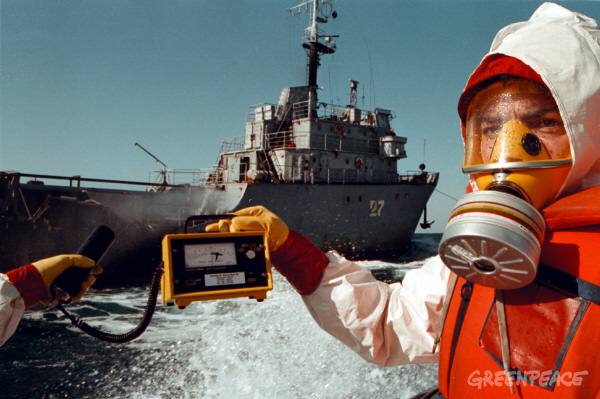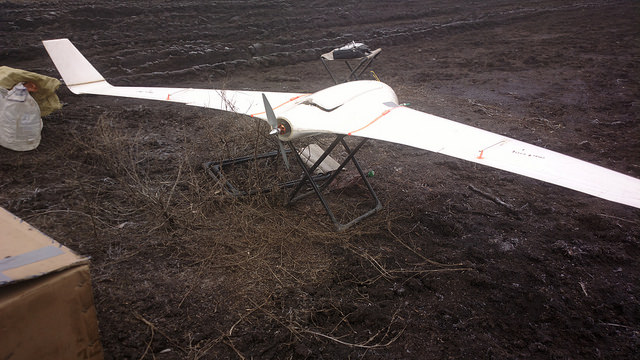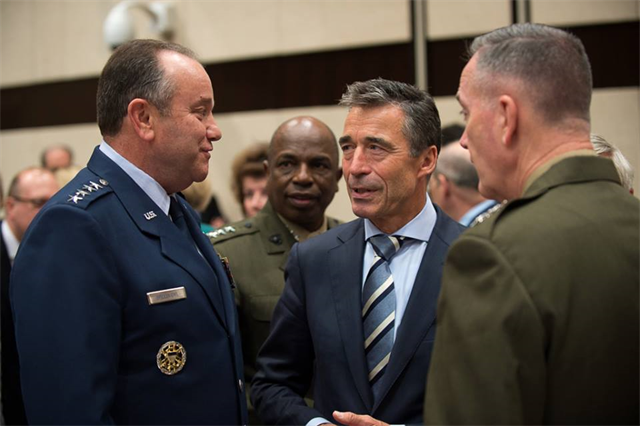Similar to the forces of climate change, nuclearization and militarization in the Arctic permeates through theoretical boundaries and has tangible effects on the international, state and individual-levels of security.
State-Level Analysis
At the state-level, deep concerns are expressed over the fact that two Nuclear-Weapons-States (NWS) — the U.S and the Russian Federation, which together own 95 percent of the nuclear weapons in the world — converge in the Arctic and have competing claims. Although the Arctic states invariably emphasize their desire to maintain a cooperative environment, several have stated that they will defend their national interests in the region if necessary.
 According to Jayantha Dhanapala, the former United Nations Under-Secretary-General for Disarmament Affairs, “The U.S and Russian competing claims, together with those of other allied NATO countries – Canada, Denmark, Iceland, and Norway – could, if unresolved, lead to conflict escalating into the threat or use of nuclear weapons.” Militarization in the Arctic is problematic at the state level because of the nuclear capabilities of two circumpolar states and their history of unstable political relations.
According to Jayantha Dhanapala, the former United Nations Under-Secretary-General for Disarmament Affairs, “The U.S and Russian competing claims, together with those of other allied NATO countries – Canada, Denmark, Iceland, and Norway – could, if unresolved, lead to conflict escalating into the threat or use of nuclear weapons.” Militarization in the Arctic is problematic at the state level because of the nuclear capabilities of two circumpolar states and their history of unstable political relations.
Russia has been quite aggressive in reintroducing itself as a player in the Arctic. The resumption of strategic bomber flights along the Norwegian coast and in the Pacific in 2007 and the presence of the Northern Fleet in the Arctic in 2008 have been visible expressions of this trend. Canadian Professor Rob Huebert insists that Moscow’s political strategy is an “iron fist in a velvet glove.” Huebert points to Russia’s “escalatory” military activities in the North and around the world: the war in Chechnya, strategic bomber flights in the Arctic, missile test-firings near the North Pole, nuclear submarine cruises in the region, and commitments to expand land force activities.
Russia’s bold military re-modernization plans appear to be part of Putin’s ambitions. The domestic and foreign policy of Russia has repeatedly emphasized the region’s importance, particularly since Putin’s second presidential term. It embodies an assertive rhetoric about protecting national interests, which has been followed up by actions seeking to enhance Russia’s position in the Arctic. Russia’s Northern Fleet, the largest and most powerful component of its navy, is based on the Kola Peninsula.
With the weakening of Russia’s conventional forces, nuclear deterrence, and particularly sea-based nuclear forces, have grown in importance and assume a high priority in its military strategy. Russia’s increased naval and air activity in the Arctic has taken place simultaneously with its increased global focus on the region’s energy potential. The overwhelming dominance of Russian militarization and nuclearization in the Arctic therefore challenges security on the state level.

The United States is the other NWS in the Arctic determined to pursue militarization. The U.S has decided to modernize its old icebreaker fleet. At the end of September 2008, the decision was made to return the U.S. Coast Guard’s heavy Arctic icebreaker Polar Star to service. The U.S coastguard has three icebreakers, one of which it is refurbishing, and it has recently deployed smaller, non-ice strengthened vessels to northern Alaska in the summer.
U.S. nuclear submarines have also increased their presence in the Barents Sea. The United States, along with Russia, continues to deploy nuclear submarines in northern waters. Recent American writings on the American grand strategy have emphasized the role of nuclear proliferation in shaping the overall survival and security prospects of the US. The maintenance of a strong defence system to repel attacks by other states remains a core defense interest of the United States. For example, the U.S. is expected to add 14 more interceptors to the existing 26 at their antiballistic missile base in Alaska.
The U.S military buildup in the Arctic is of concern because other circumpolar states are bound to get caught in the melee of nuclear-weapons states deploying larger and larger arsenals of both offensive and defensive weapons in the region. Such a trend is far too likely to lead to even greater security concerns between two NWS over competing claims in the region.
[quote align=”center” color=”#999999″]Like the forces of climate change, militarization in the Arctic permeates through theoretical boundaries and has tangible effects on the international, state and individual-levels of security.[/quote]
Individual-Level of Analysis
Militarization in the Arctic is also a definitive domestic issue facing Indigenous communities. Increased nuclear activity in the Arctic releases radioactive pollutants in the air and in the food chain that create serious health risks for local Indigenous communities in the region. Moreover, some of the most pressing problems that can arise from the militarization of the Arctic involve the impacts of the peacetime uses of the region. Air bases, radar sites, and other military installations often disrupt the sensitive northern ecosystems, and in turn, the subsistence practices of local residents or the social fabric of indigenous communities.
Environmental protection is ever more important in the face of opening new sea lanes for transportation, new resource exploration on sea and land, and the exploitation of fisheries — this combined with the radioactivity from nuclear sources creates significant risks for local populations. On the individual-level, militarization and nuclearization in the region could have negative effects on local communities.

The environment and security concerns are interconnected in the Arctic; it exists in the threshold between the fields of high politics and low politics. An example of this is nuclear pollution, which is said to represent a “soft” security issue, though most radioactive wastes and nuclear accidents in the Arctic region are caused by the military, the quintessential embodiment of hard politics. Environmental threats posed by militarization in northern regions are security threats among Indigenous peoples. Long-range air and water pollution, and radioactivity, as well as regional environmental wastes from industrial and military activities, have in the last decades been concentrated in northern regions. Thus, environmental security concerns are a threat to Indigenous peoples and their traditional livelihoods and cultures.
Therefore, in conclusion to this two-part series, it is evident much like the forces of climate change, militarization and nuclearizaiton in the Arctic permeates through theoretical boundaries and has tangible effects on the international, state and individual-levels of security.




